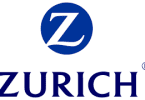Homestead insurance is a type of property insurance that provides coverage for a person’s primary residence, or “homestead.” It typically covers damage or loss caused by fire, theft, and certain natural disasters.
Homestead insurance also usually includes liability coverage, protecting the homeowner from lawsuits if someone is injured on their property. The specifics of a homestead insurance policy can vary depending on the insurer and the location of the property.
You may also like
Types of homestead insurance
There are several types of homestead insurance, including:
- Standard homeowners insurance: This type of insurance provides coverage for the physical structure of the home, as well as personal property and liability.
- Flood insurance: This type of insurance provides coverage for damage caused by floods, which is not typically covered by standard homeowners insurance.
- Earthquake insurance: This type of insurance provides coverage for damage caused by earthquakes, which is not typically covered by standard homeowners insurance.
- Umbrella insurance: This type of insurance provides additional liability coverage above and beyond what is provided by a standard homeowners insurance policy.
- Home warranty: This type of insurance covers the cost of repairs or replacement of certain household systems and appliances that break down due to normal wear and tear.
It is important to note that different insurance companies and in different states have different coverage options, it’s best to check with the insurance company or an insurance agent to understand the specific coverage options available in your area.

Cost of homestead insurance
The cost of home insurance, also known as homeowner’s insurance or homestead insurance, varies depending on a number of factors such as the location of the property, the age and condition of the home, and the amount of coverage desired. Some other factors that may affect the cost of home insurance include the value of the home, the type of construction, and the presence of any safety features. On average, homeowners can expect to pay between $300 and $1,000 per year for home insurance. However, it is best to get quotes from multiple insurance providers to find the most affordable rate.
Benefits of homestead insurance
Homestead insurance, also known as homeowner’s insurance, provides financial protection for your home and personal property in the event of certain types of damage or loss. Some of the main benefits of homestead insurance include:
- Protection against natural disasters: Home insurance can provide coverage for damage caused by natural disasters such as hurricanes, tornadoes, earthquakes, and fires.
- Liability protection: Home insurance can help protect you financially if someone is injured on your property or if you are found liable for damage caused by your actions or negligence.
- Protection for personal property: Home insurance can help cover the cost of replacing personal property that is lost or damaged, such as furniture, electronics, and clothing.
- Additional living expenses: Home insurance can help cover the cost of temporarily living elsewhere if your home is uninhabitable due to damage.
- Mortgage requirement: Many mortgage lenders require to have homeowners insurance as a condition to get the mortgage.
It’s important to note that coverage and benefits vary depending on the insurance policy you choose and the provider. It’s always recommended to read the policy and understand what it covers and what it doesn’t.
How to apply for homestead insurance
Applying for homestead insurance, also known as homeowner’s insurance, typically involves the following steps:
- Research insurance providers: Compare different insurance providers and their policies to find the best coverage and rates for your needs.
- Gather necessary information: Prepare information such as your personal details, property address and details, and any recent claims or losses.
- Get a quote: Contact insurance providers or use online quote tools to get a sense of the cost of coverage for your property.
- Review the policy: Once you have a quote, review the policy to ensure that it covers all your desired types of coverage and that you understand the terms and conditions.
- Fill out an application: Fill out the application form with your personal and property information, and submit it along with any required documentation to the insurance provider.
- Pay for coverage: Once your application is approved, you will need to pay for your coverage, typically on a monthly or annual basis.
- Keep your policy updated: It’s important to keep your policy updated to ensure that you have the right coverage in case of any change.
It’s worth mentioning that some insurance providers may require an inspection of the property before providing coverage. It’s always best to check with the provider on their requirements and process.






Leave a Comment